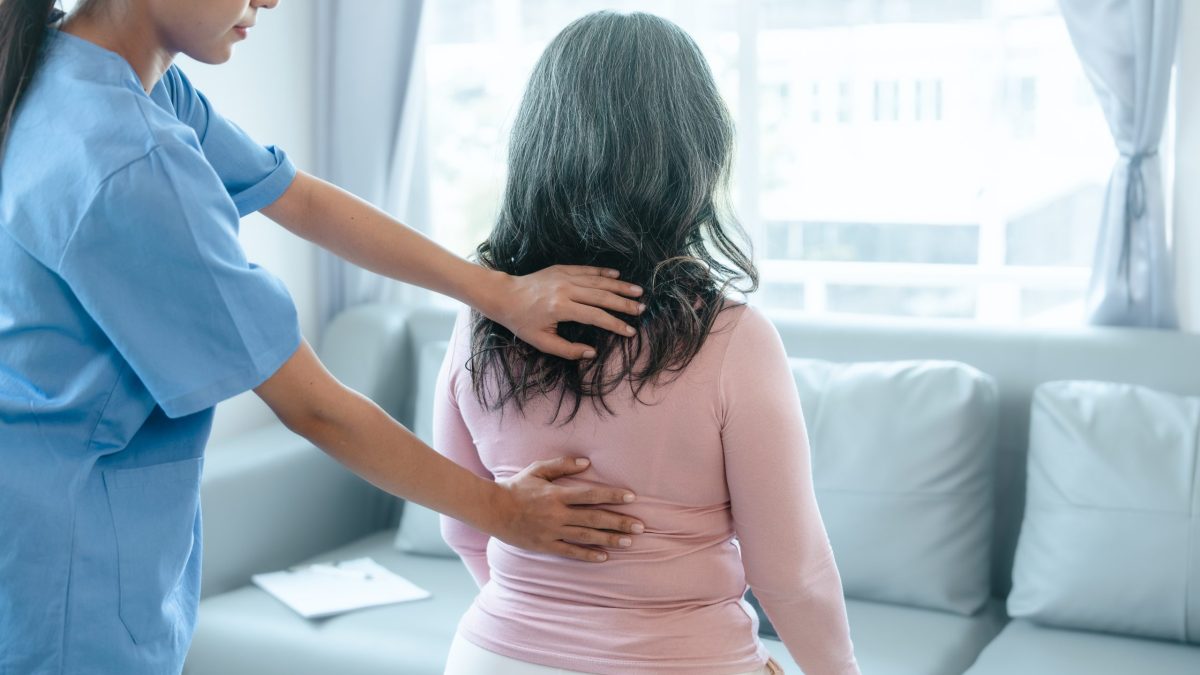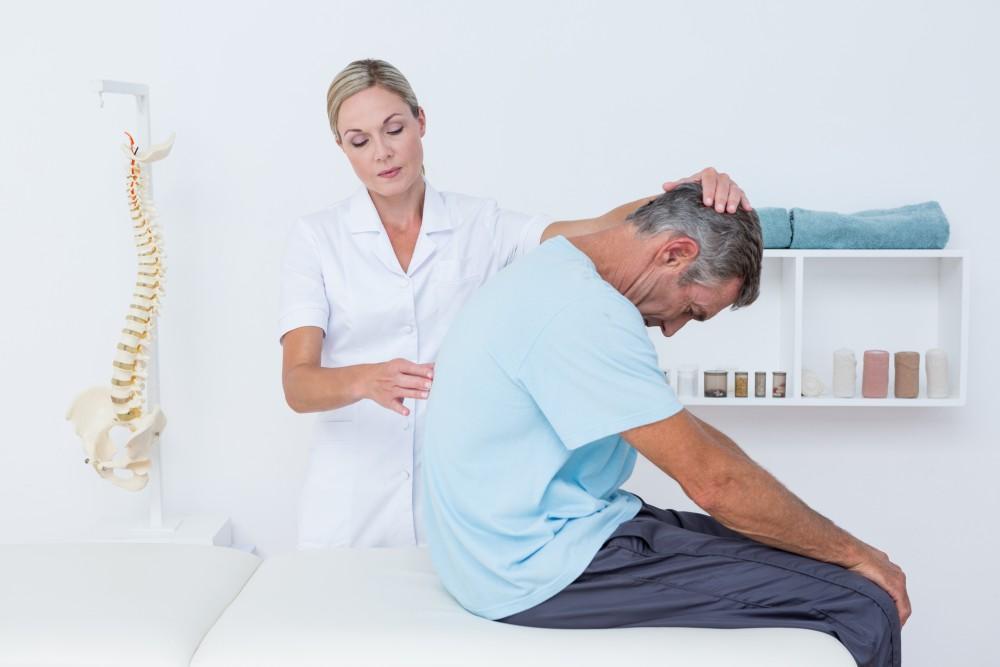Understanding Osteoporosis Risk Factors
Osteoporosis is a medical condition characterized by weakened bones, making them fragile and more prone to fractures. Several osteoporosis risk factors contribute to the development of osteoporosis, ranging from genetic predisposition to lifestyle choices.
Author:James PierceReviewer:Karan EmeryFeb 20, 2024313 Shares39.1K Views

Osteoporosis is a medical condition characterized by weakened bones, making them fragile and more prone to fractures. Several osteoporosis risk factorscontribute to the development of osteoporosis, ranging from genetic predisposition to lifestyle choices. Understanding these risk factors is crucial for preventive measures and early detection. Here are some key factors:
Age
Osteoporosis is more likely to happen in older people because their bones become less dense as they age. Bone remodeling, which is the process of getting rid of old bone and making new bone, happens at a steady rate throughout life.
As people age, though, this balance changes, and more bone is lost than is gained. This slow loss of bones makes the skeleton weaker, which makes bones more likely to break and raises the risk of getting osteoporosis, especially in women who have gone through menopause because of changes in their hormones.
Even though getting older is a part of life, some lifestyle choices, like eating a healthy diet high in calcium and vitamin D, doing regular weight-bearing exercise, and giving up bad habits like smoking and drinking too much alcohol, can help keep bones healthy as you age. Osteoporosis in older adults needs to be managed with regular checks and early treatment.
Gender
Gender is a very important factor in osteoporosis risk, with women being more likely than men to get it. Most of this higher risk comes from the drop in estrogen levels that happens during menopause.
Estrogen is very important for keeping bone mass by controlling the actions of osteoblasts, which make bones, and osteoclasts, which break down bones. If your estrogen levels drop, your bone loss speeds up. This makes your bones less dense and susceptible to breaking.
Men lose bone density with age too, but their bones are usually stronger to begin with and they lose bone density more slowly than women do. Because of this, women, especially those who have gone through menopause, are encouraged to take action to protect their bone health by making changes to their lifestyles, eating well, doing weight-bearing exercise, and, if necessary, seeing a doctor.
Hormonal Changes
Women are more likely than men to get osteoporosis because of changes in their hormones. In particular, estrogen is very important for keeping bone health because it controls the balance between building bone and breaking it down.
Estrogen levels drop during menopause, which speeds up bone loss by increasing bone resorption and decreasing bone growth. Similarly, men's bone loss can be caused by lower testosterone levels that come with getting older, though at a slower rate than in women.
Hormonal changes like hyperthyroidism or hyperparathyroidism can also hurt bone health by stopping the processes that rebuild bones. To find and treat osteoporosis early, it is important to know how changes in hormones affect bone metabolism. This is because hormone replacement therapy or other targeted treatments are often used to stop bone loss and lower the risk of fracture.
Family History
A strong risk factor for osteoporosis is a family history of the disease, which means that some people are genetically more likely to get it. People who have a family history of osteoporosis are more likely to get it themselves. This is especially true if parents or siblings have broken bones because of low bone density.
Bone density, bone shape, and the chance of breaking a bone are all affected by genetic factors. This is one reason why osteoporosis can run in families. While genes play a part, living factors like eating habits, exercise levels, and smoking habits that are passed down through families can also make osteoporosis more common.
If you know about your family history, you can take steps to protect your bone health, such as making changes to your lifestyle, getting regular bone density screenings, and starting early on tactics to lower your risk of fractures and other problems related to osteoporosis.
Race And Ethnicity
Race and ethnicity play a big role in the danger of osteoporosis, with some groups being more likely to get it than others. Compared to people of other races and ethnicities, Caucasians and Asians are more likely to get osteoporosis. Different racial and ethnic groups have different bone density, bone shape, and genetic factors that can cause this higher risk.
Differences in osteoporosis risk may also be caused by culture and lifestyle factors, such as differences in what people eat, how much they exercise, and how much they are exposed to environmental factors like sunlight, which is needed to make vitamin D. Understanding how race and culture affect the risk of osteoporosis shows how important it is to use culturally sensitive methods to promote bone health and create prevention plans that fit the needs of all kinds of people.
Body Composition
Body makeup is a very important factor in figuring out how likely someone is to get osteoporosis. Because they have less bone mass to begin with, people who are small or who don't weigh much are often more at risk.
People with low muscle strength may also be more likely to get it. This is a condition that is common in older adults and people who don't move around much. Having enough muscle mass is important for bone health because when you work out, your muscles put mechanical stress on your bones, which helps bones grow.
To keep bone density high and lower the risk of osteoporosis and fractures, it is important to keep a healthy body composition, which includes a mix of body fat and lean muscle mass. A healthy meal full of calcium and vitamin D, along with regular weight-bearing exercise, can help you reach your ideal body composition and improve your bone health.
Dietary Factors
What you eat has a big impact on how osteoporosis develops and how it is treated. Getting enough calcium and vitamin D is important for making and keeping bones strong. Calcium is an important nutrient for bone health. Not getting enough calcium can make bones less dense and raise the risk of breaking them.
Dairy products, leafy veggies, tofu, and foods that have been added to are all good sources of calcium. Vitamin D helps keep calcium levels in the blood in check and is needed for the body to absorb calcium from the bowels. Vitamin D can be found naturally in fatty fish, egg yolks, and foods that have been fortified with it. However, the body also makes vitamin D when it is exposed to sunshine.
A healthy diet with enough protein, fruits, veggies, and whole grains also gives you important nutrients and antioxidants that help your bones stay healthy. Key parts of preventing and treating osteoporosis are keeping an eye on and improving what you eat, as well as making changes to your lifestyle and getting medical help as needed.
Sedentary Lifestyle
An sedentary lifestyle, which includes long periods of sitting or not doing much physical exercise, is a major risk factor for getting osteoporosis. Weight-bearing exercise should be done regularly to keep bone mass and strength up.
This is because it encourages bone remodeling and the growth of new bone tissue. On the other hand, not being active enough can make bones weaker and cause them to break. People who don't move around much are more likely to get osteoporosis and break bones, especially in weight-bearing bones like the back, hips, and wrists.
Regular physical exercise, like walking, jogging, dancing, or strength training, should be a part of everyone's daily life to keep bones healthy and lower the risk of osteoporosis. Also, breaking up long periods of sitting with short bursts of movement can help lessen the damage that a sedentary lifestyle does to bone health.
Smoking
While not directly linked to osteoporosis, smoking is known to greatly increase the chance of getting the disease and breaking a bone. The bad chemicals in cigarettes make it harder for the body to receive calcium, which is an important mineral for bone health. They also mess up the production and function of estrogen and testosterone, which are hormones that keep bone density high.
Because of this, smokers' bones are less dense and they are more likely to break than nonsmokers' bones. Quitting smoking has also been shown to improve bone health and lower the chance of fracture over time. This shows how important it is to quit smoking as part of strategies for preventing and managing osteoporosis.
Excessive Alcohol Consumption
Too much alcohol use is a major risk factor for osteoporosis because it weakens bones and makes them more likely that they will break. Heavy drinking on a regular basis can make it harder for the body to take calcium, which is important for strong bones.
It can also stop the production of vitamin D, which is needed for calcium absorption. Also, drinking alcohol can slow down the processes of bone growth and remodeling, which can cause bone density to drop over time.
In addition, drinking too much alcohol may raise the chance of accidents and falls, which makes fractures even more likely in people whose bones are already weak. If you want to keep your bones healthy and lower your risk of complications linked to osteoporosis, you should drink alcohol in moderation or not at all.
Certain Medications
Some medicines can make you more likely to get osteoporosis by weakening bones or stopping the process of bone rebuilding. Long-term use of corticosteroids, like prednisone, can cause bone loss because they stop bones from growing and break down faster.
In the same way, some medicines used to treat thyroid problems, like thyroxine, can speed up bone turnover and lower bone structure. Also, some seizure medicines, like phenytoin and phenobarbital, have been linked to lower bone density and a higher chance of breaking a bone.
People who take these medicines for a long time should talk to their doctor about any possible bone health concerns and look into ways to lower their risk of osteoporosis, such as taking extra calcium and vitamin D, making changes to their lifestyle, and getting their bone density checked on a regular basis.
Medical Conditions
A number of health problems that weaken or weaken bones can raise the risk of osteoporosis. Rheumatoid arthritis is an autoimmune inflammatory disorder that can weaken bones and cause bone loss because of the constant inflammation that happens and the use of corticosteroid drugs to treat symptoms.
GI problems like celiac disease, inflammatory bowel disease, and gastric bypass surgery can make it harder to absorb nutrients like calcium and vitamin D, which are important for bone health. Hormonal disorders, like hyperthyroidism, hyperparathyroidism, and disorders of the adrenal glands, can throw off the balance of hormones that affect bone metabolism, which can cause bones to break down.
Some cancers, like multiple myeloma and cancers that have spread, can also weaken bones by changing the way bones grow and change. To lower the chance of osteoporosis and its complications, it is important to take care of these underlying health problems and take proactive steps to protect bone health.
Previous Fractures
Previous fractures are a major risk factor for future osteoporotic fractures, showing how weak bones are and how easy they are to hurt. People who have already broken a bone from a small injury, like falling from a standing position, are more likely to break it again, especially if they have osteoporosis.
These breaks usually happen in bones that don't have as much bone density, like the back, hips, and wrists. Fractures can also make it hard to do things, make it harder to move around, and lower your quality of life.
Because of this, people who have broken a bone, especially those over the age of 50, need to get a bone density test and the right care to stop further bone loss and fractures, like making changes to their lifestyle, taking medication, and learning how to avoid falling. Finding osteoporosis early and taking care of it can help lower the chance of future fractures and improve bone health in general.
Osteoporosis Risk Factors - FAQ
What Is The Main Cause Of Osteoporosis?
Low estrogen levels in women after menopause. Low levels of estrogen from the abnormal absence of menstrual periods in premenopausal women due to hormone disorders or extreme levels of physical activity. Low levels of testosterone in men. Men with conditions that cause low testosterone are at risk for osteoporosis.
What Happens If You Have Osteoporosis?
Osteoporosis causes bones to become weak and brittle - so brittle that a fall or even mild stresses such as bending over or coughing can cause a break. Osteoporosis-related breaks most commonly occur in the hip, wrist or spine. Bone is living tissue that is constantly being broken down and replaced.
Can Osteoporosis Be Cured?
There is no cure for osteoporosis, but the symptoms of your disease can be managed with medicines and lifestyle changes. Depending on your age, sex and medical history, your doctor will recommend different treatments to help you. The aim of treatment is to: strengthen your bones so that they are less likely to break.
Final Words
It's crucial to know the osteoporosis risk factors to understand its background. By comprehending the various elements that contribute to osteoporosis, such as age, genetics, diet, and lifestyle choices, we can take proactive steps to prevent or manage this condition effectively. Awareness of these risk factors empowers individuals to make informed decisions about their health, leading to better outcomes and improved quality of life.

James Pierce
Author

Karan Emery
Reviewer
Latest Articles
Popular Articles

